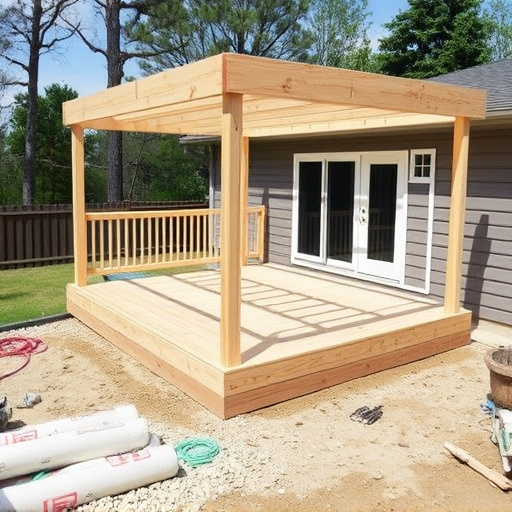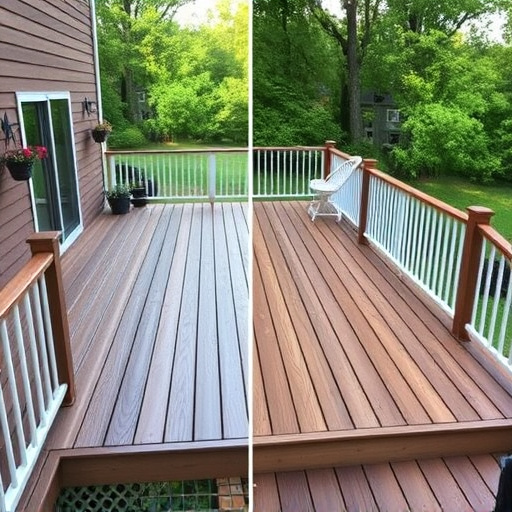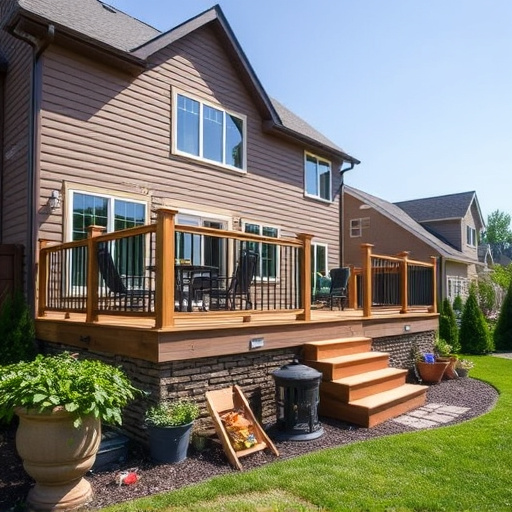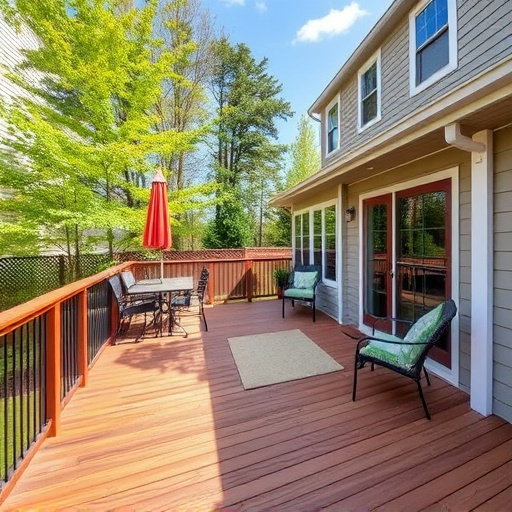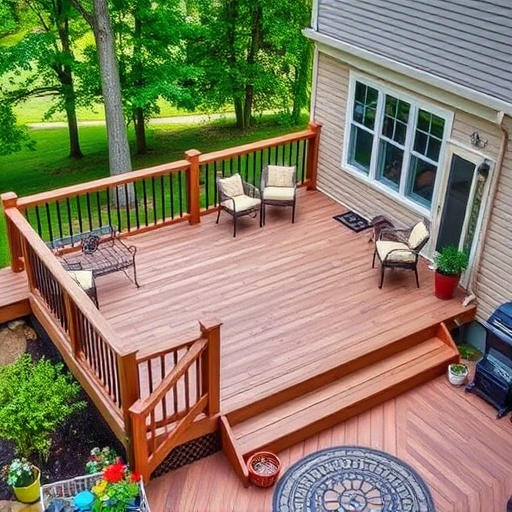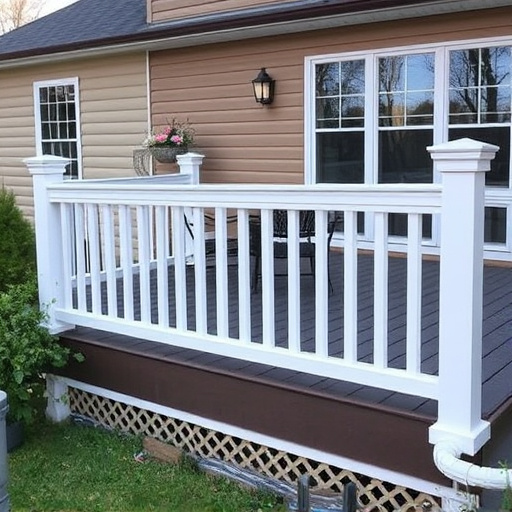Regularly inspect a multi level deck to prevent and address damage from weather, foot traffic, and wear, which can lead to structural issues. Prompt action on small problems prevents costly repairs. Strategic maintenance includes refinancing (major repairs) or resealing (aesthetic improvements). Evaluate the deck's condition and desired longevity to choose between resealing for minor issues or refinishing after extensive water damage or rot.
“Maintain your multi-level deck’s beauty and functionality with expert guidance on refurbishment. This comprehensive guide explores the nuances of when to refinance or reseal, ensuring longevity and aesthetic appeal. From assessing damage and wear patterns to understanding the necessity of refinishing, you’ll learn crucial signs indicating these treatments. Furthermore, discover the benefits of resealing versus a full refinance for optimal durability, allowing you to make informed decisions for your outdoor living space.”
- Assessing Damage and Wear on Multi Level Decks
- Understanding When Refinishing is Necessary
- Choosing Between Reseal or Full Refinish for Durability
Assessing Damage and Wear on Multi Level Decks

Regularly inspecting your multi level deck for signs of damage is key to maintaining its structural integrity and aesthetic appeal. Over time, exposure to varying weather conditions, foot traffic, and everyday wear and tear can take a toll on the deck’s surface. Common issues to look out for include cracked or splintered wood, loose or missing boards, rot at joints or beams, peeling paint, and faded color. These indicators signal that it might be time to consider refinishing or resealing your multi level deck to protect it from further deterioration.
When assessing the condition of your deck, don’t overlook subtle signs such as warped siding or uneven surfaces. Such issues could point towards more significant structural problems that require professional attention. Home exterior services providers specializing in siding repairs can offer expert advice and perform necessary remediation to ensure your multi level deck is safe and secure for years to come. Remember, prompt action on damage detection is crucial to prevent small problems from escalating into costly repairs.
Understanding When Refinishing is Necessary

A multi-level deck is a significant investment for any homeowner, so knowing when to refinance or reseal it properly is crucial. Over time, outdoor structures like decks are exposed to various elements, leading to wear and tear. Decks may require refinancing if they show signs of severe damage, such as cracked or broken boards, loose joints, or rotting wood. These issues not only compromise the deck’s structural integrity but also create safety hazards. Regular inspection is key; checking for loose nails, peeling paint, or water damage can help identify problems early on.
Refinishing might be necessary if the deck has lost its original finish, leading to increased moisture absorption and potential warping. A fresh coat of sealant or new siding installation can protect against water penetration, prolonging the deck’s lifespan. In contrast, if there are only minor issues like faded colors or rough textures, a simple reseal may suffice. Considering a multi-level deck’s unique challenges, such as foot traffic and varying weather conditions, timely maintenance through refinancing or resealing ensures it remains a functional and aesthetically pleasing addition to your home, even with its elevated design, much like a robust roof replacement for a house protects against the elements.
Choosing Between Reseal or Full Refinish for Durability
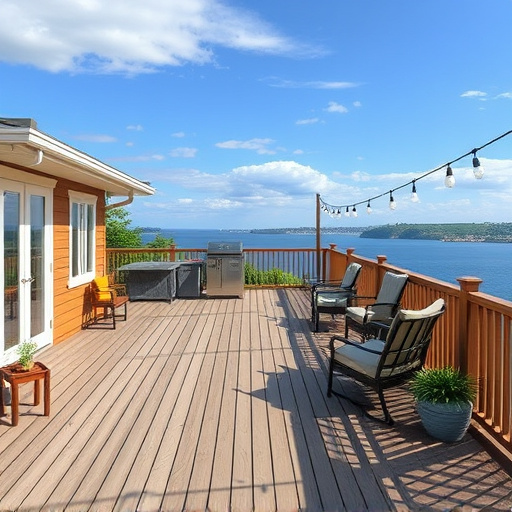
When deciding between resealing or full refinishing a multi-level deck, consider its current condition and long-term goals for durability. Resealing is an excellent option if your deck has minor wear and tear but still retains much of its original finish. This process involves cleaning the surface, repairing any damaged areas, and applying a new protective coating to prevent moisture absorption and UV ray damage. It’s a more affordable option that can extend the life of your deck by several years.
For decks with extensive water damage, rot, or significant structural issues due to storm damage repair, a full refinish might be necessary. This involves stripping away the old finish, sanding down any rough spots or peeling paint, and applying new layers of sealant or finishing materials. While more costly than resealing, a full refinish offers superior protection for your home exterior services and can dramatically transform the appearance of your multi-level deck, making it look as good as new.
In assessing the condition of your multi-level deck, understanding when to refinance or reseal is key to maintaining its structural integrity and aesthetic appeal. By recognizing signs of damage, knowing when refinishing is necessary, and choosing between resealing or a full refinance based on durability needs, you can ensure your deck remains a vibrant and functional space for years to come. Proper care and timely interventions will help preserve the beauty and value of your multi-level deck.



